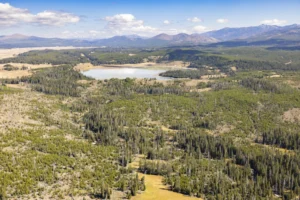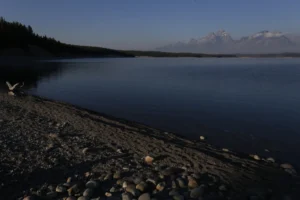Barefoot in Madagascar: Adventures in an African Rainforest
- Published In: Other News & Features
- Last Updated: Feb 09, 2023

By Matt Stirn
Special to the Wyoming Truth
I stood on the side of a dirt road staring at a wall of trees and vines in front of me. As lightning bristled across the night sky, the pitter patter of rain served as a background to the blaring ring of cicadas who dutifully announced the arrival of that night’s thunderstorm. The warm air became thick with moisture, and the sweet smell of chocolate drifted from the tens of thousands of cacao trees growing across the valley landscape. As a nocturnal lemur called somewhere in the distance, I took off my shoes, clicked on my headlamp and followed my guide barefoot into a sacred rainforest.
For the past week, I had worked out of Ambanja, a town in northern Madagascar, covering a story about how responsible cacao farming had helped restore a fragile ecosystem. One of the poorest countries in Africa, Madagascar has seen some of the highest rates of deforestation anywhere in the world. In order to support their families and communities, people have routinely clear-cut old growth forests for firewood to make room for growing rice and herding cattle. Because of this widescale habitat destruction, animals such as lemurs, chameleons and birds have suffered. More agriculture meant less rainforest, but at the same time, more conservation meant less income for extremely poor communities. It was a paradoxical situation with no easy solution.

Over the past few years, however, research conducted by the Bristol Zoo in partnership with chocolate company Beyond Good has revealed that responsible cacao farming might offer a solution that benefits both the environment and rural villagers. By planting larger shade trees over cacao groves (a tactic that enhances complex flavors in chocolate), farming co-ops partnered with Beyond Good were able to support themselves economically while actively growing an environmental sanctuary for animals whose home forests had been destroyed nearby. It seemed like a win-win situation for everyone, and I was excited to learn about it. Coming from Wyoming where conservation, ranching and agriculture so often compete against each other, I hoped in the back of my mind that the success in Madagascar might offer a case study for the rest of the world to learn from.
On the particular night of the barefoot excursion, I was in the village of Antranokarany, which is located next to a rare stand of primary rainforest that had been protected by lush cacao plantations surrounding its perimeter. The forest was sacred to the village, and according to our guide, it was “a place where the gods listened.” While I was excited to see it, I silently prayed that the gods would direct my feet from any of the myriad of medical or bestial calamities I imagined to be lurking on the forest floor. A nervous laugh escaped me as I remembered the infectious disease clause of my travel insurance, warning that many issues might simply be avoided by “not walking barefoot in the dirt.” But what would be the fun in that?

My night spent in the sacred forest was an experience unlike any other. Ducking beneath vines, crawling over fallen logs and skirting the trunks of giant trees, we ventured deeper into the vibrant ecosystem. To my utter surprise, the decomposing plants on the forest floor provided a soft and squishy base for my exposed feet; it felt not unlike walking on a living shag carpet. Frogs sang in a ringing chorus, chameleons slept at the end of tree branches and tenrecs (small spiky mammals like hedgehogs) darted amongst the foliage. Most excitingly, though, was the discovery of several small Mouse Lemurs feeding on tiny fruits. They had most likely traveled to this stand of trees from habitat that had been cleared elsewhere; their presence indicated that the forest and surrounding cacao plantations were supporting wildlife in need.
Later that night, as we navigated potholes deeper than our car on the way back to town, I reflected on the unexpectedness of my brief venture into the forest. If you are cognizant of your surroundings and navigate in a responsible way, rainforests can provide comfort to the barefoot traveler and agriculture can offer solace to a fragile ecosystem. If we can take some time to look beyond our preconceptions of the world, we may be surprised by what we find.

(Wyoming Truth photo by Matt Stirn)
Finally, as I climbed into bed with the calls of frogs and lemurs still lingering in my mind, I made a mental note to wear my comfy socks for the long car ride north the next day. My feet had earned it.













